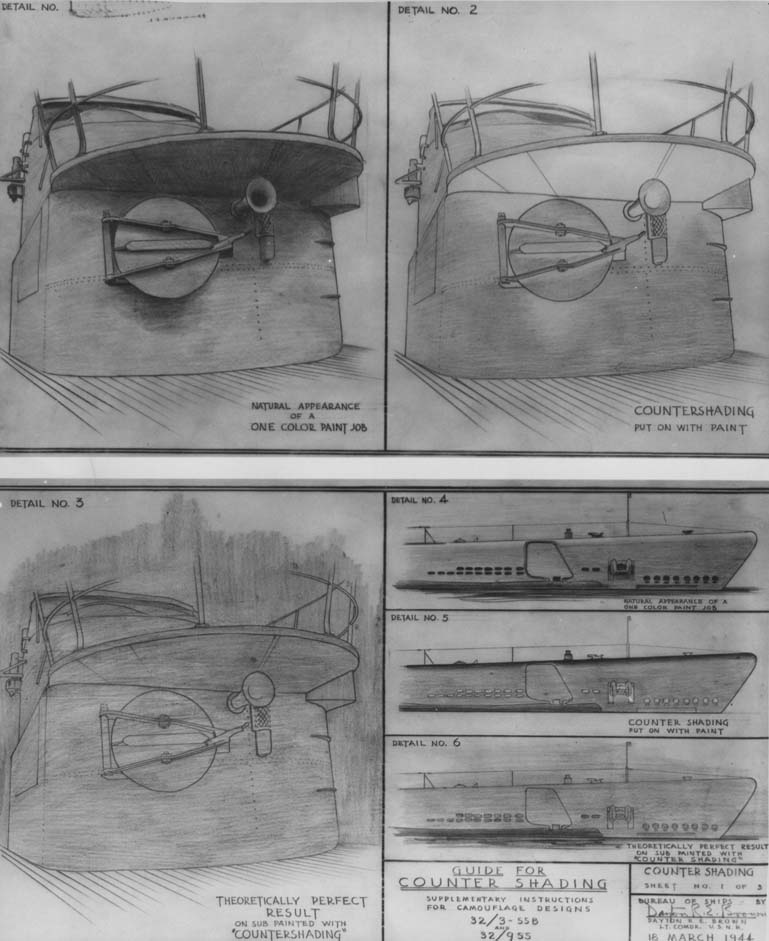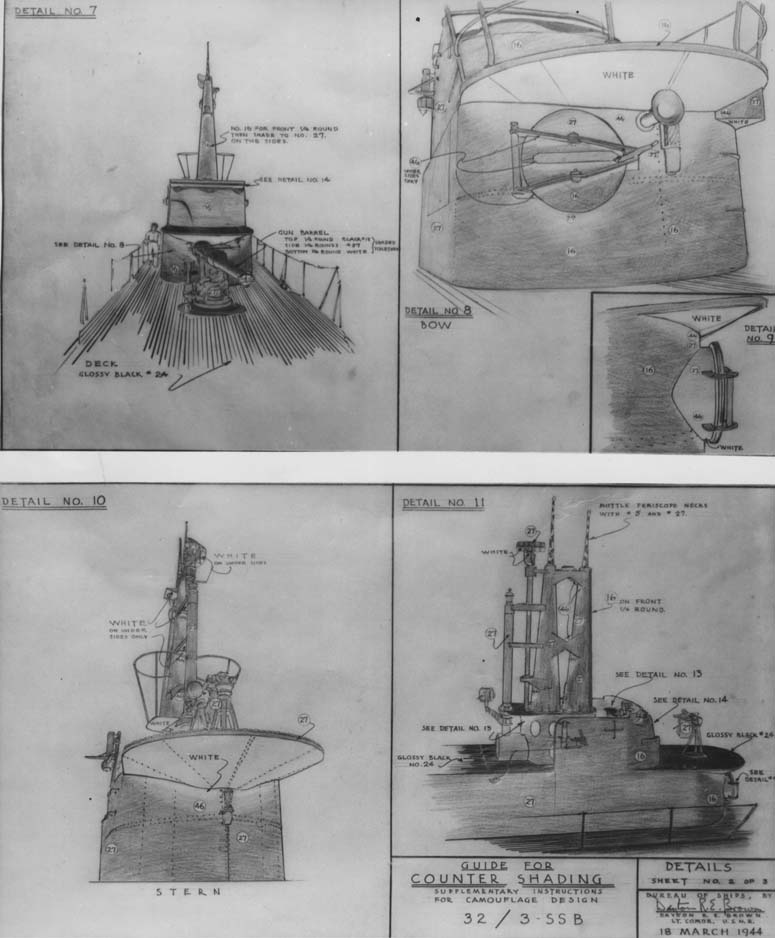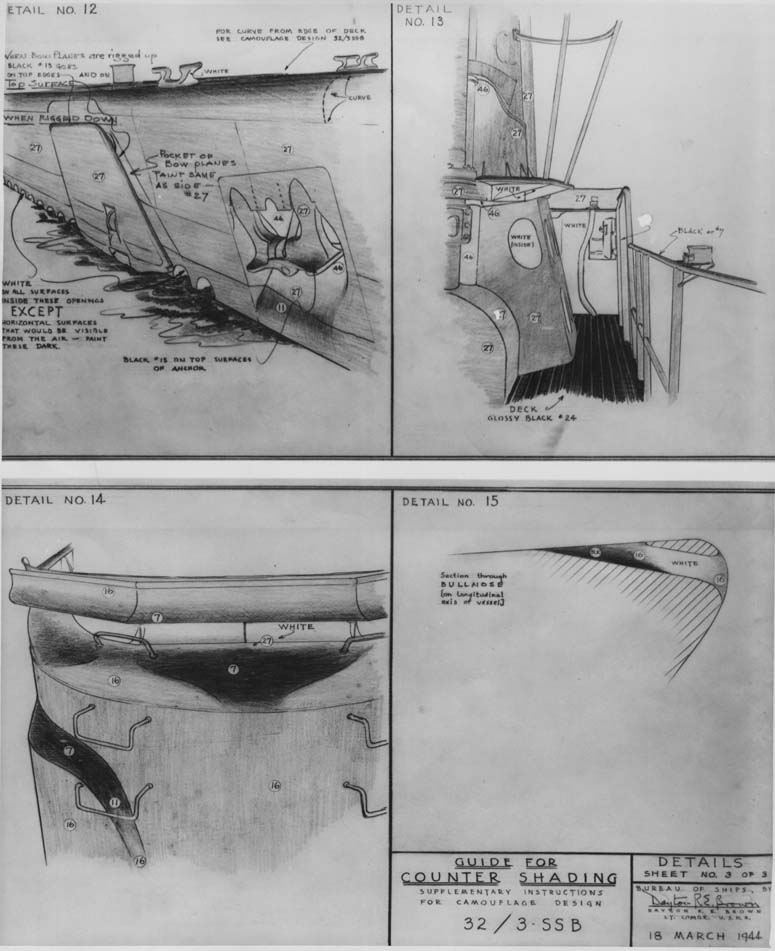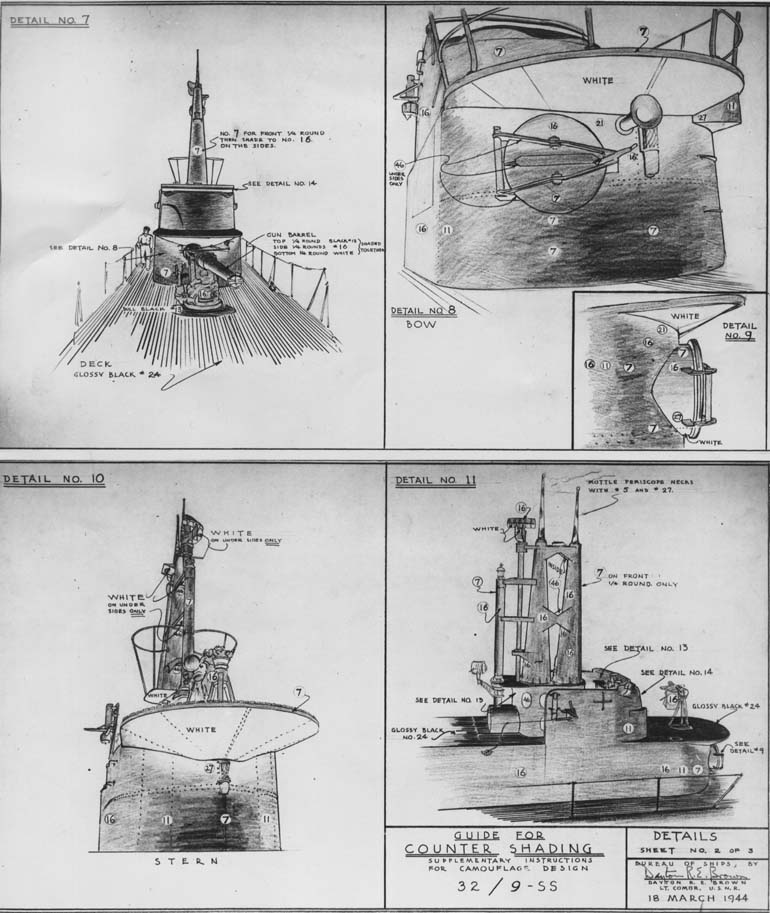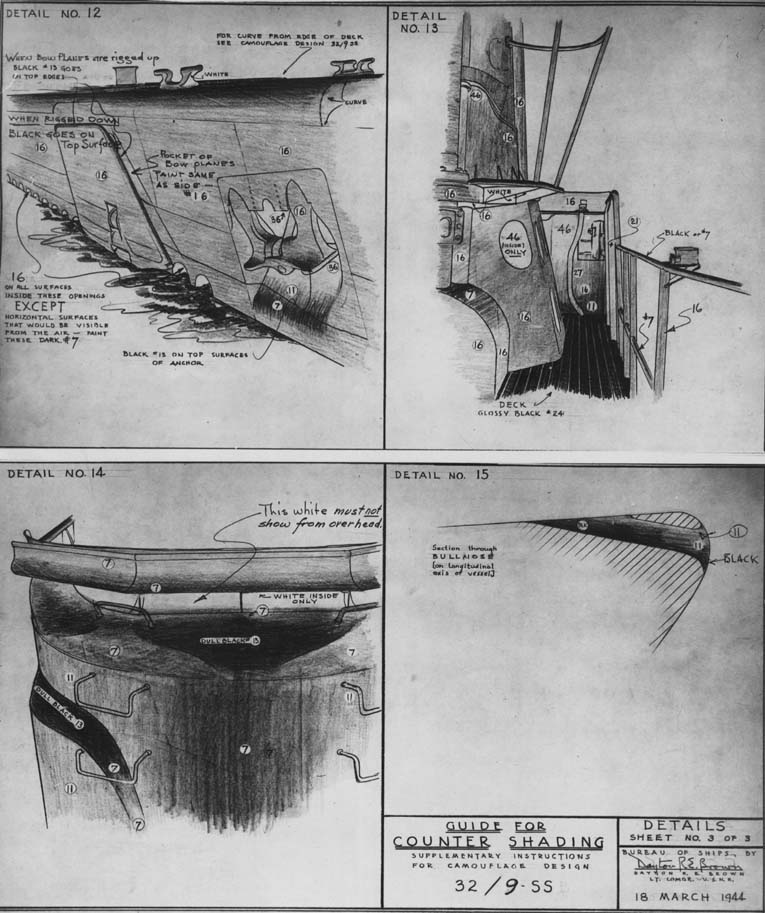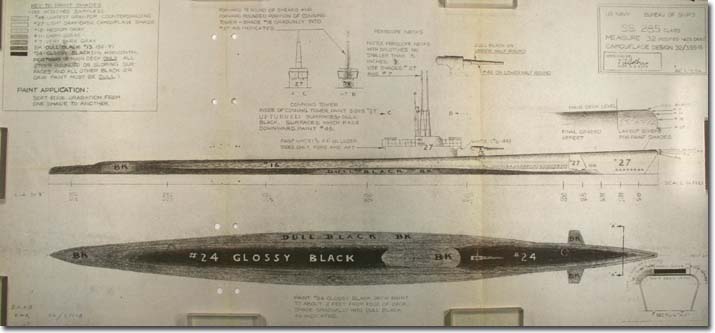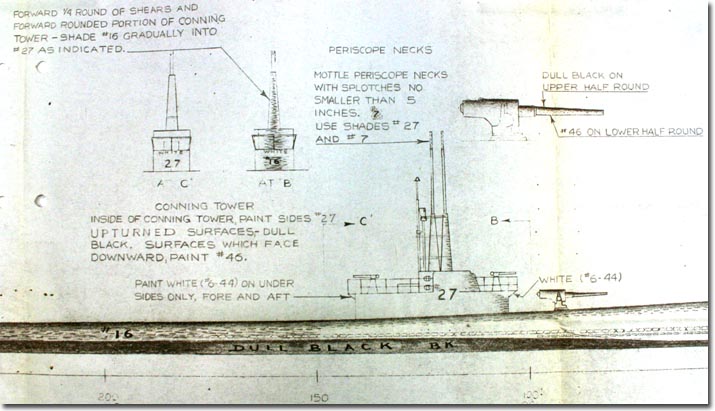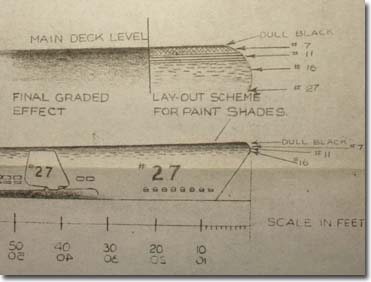|
CONFIDENTIAL
INSTRUCTION FOR APPLYING SUBMARINE CAMOUFLAGE
- - - - - - - - - - - - - - - - - - - - - - - - - - - - - - - - - - - -
days, the glossy black approaches an eggshell finish which is near the ideal for low visibility. In case submarines are painted with less than 12 days before they are to arrive in their operating area, #24 Glossy Black should be cut with an equal part of Dull Black #13 or #82-Y.
The "Dark Gray", design 32/9ss dated 18 March 1944, is less effective than the "Light Gray" for all surface work, However, it is the most difficult paint job to see at periscope depth and impossible to see in deep water below 150 feet. It has quite a bit of advantage over the plain black in other situations also and was designed especially for reconnaisance patrols in clear calm waters where enemy aircraft are the greatest danger. It is not bad for general patrol work, but the "Light Gray" is much better, especially at night. Even the so called "Light Gray" is too dark most of the time but to make it lighter would unduly increase its possibility of detection by enemy aircraft in the few situations that are bad.
In applying the Submarine Concealment Camouflage painting there are a few things which seem to give every one a little trouble at first, even after paint samples and paint in mixed form are at hand, spray equipment is hooked up and the vessel is prepared for painting with its primer coat on.
Dry and wet paint samples have been prepared by Navy Yard, P.H., and Sub Base, P.H. Six sets of dry samples have been prepared by the SPERRY. One set should be turned over to the Squadron Engineer and one to each Division Engineer aboard the SPERRY and BUSHNELL. Since all samples fade or darken in time, they should be replaced about once every five or six months, from Navy Yard, P.H., paint shop #71. Wet samples are being kept by the painter assigned to the Squadron Engineer on the SPERRY. A wet set should be kept by the BUSHNELL also.
BuShips has been requested to make specifications for the submarine paint shades and to direct Navy Yard, Mare Island, paint factory to supply the shades in ready mixed form. Pending this arrangement, the shades will have to be mixed in the field. The tenders can do this for the divisions. The tenders have also been requested to assist in checking up on paint supplies, brushes, spray guns, etc., and to provide the division relief crews with all assistance possible on these material matters.
Difficulties of obtaining any paint at all have been experienced in many Pacific areas, including Navy Yard, P.H., and Sub Base, P.H. It is recommended that a careful check be kept of paint stocks and 3 to 4 months allowed for filling new orders.
|

